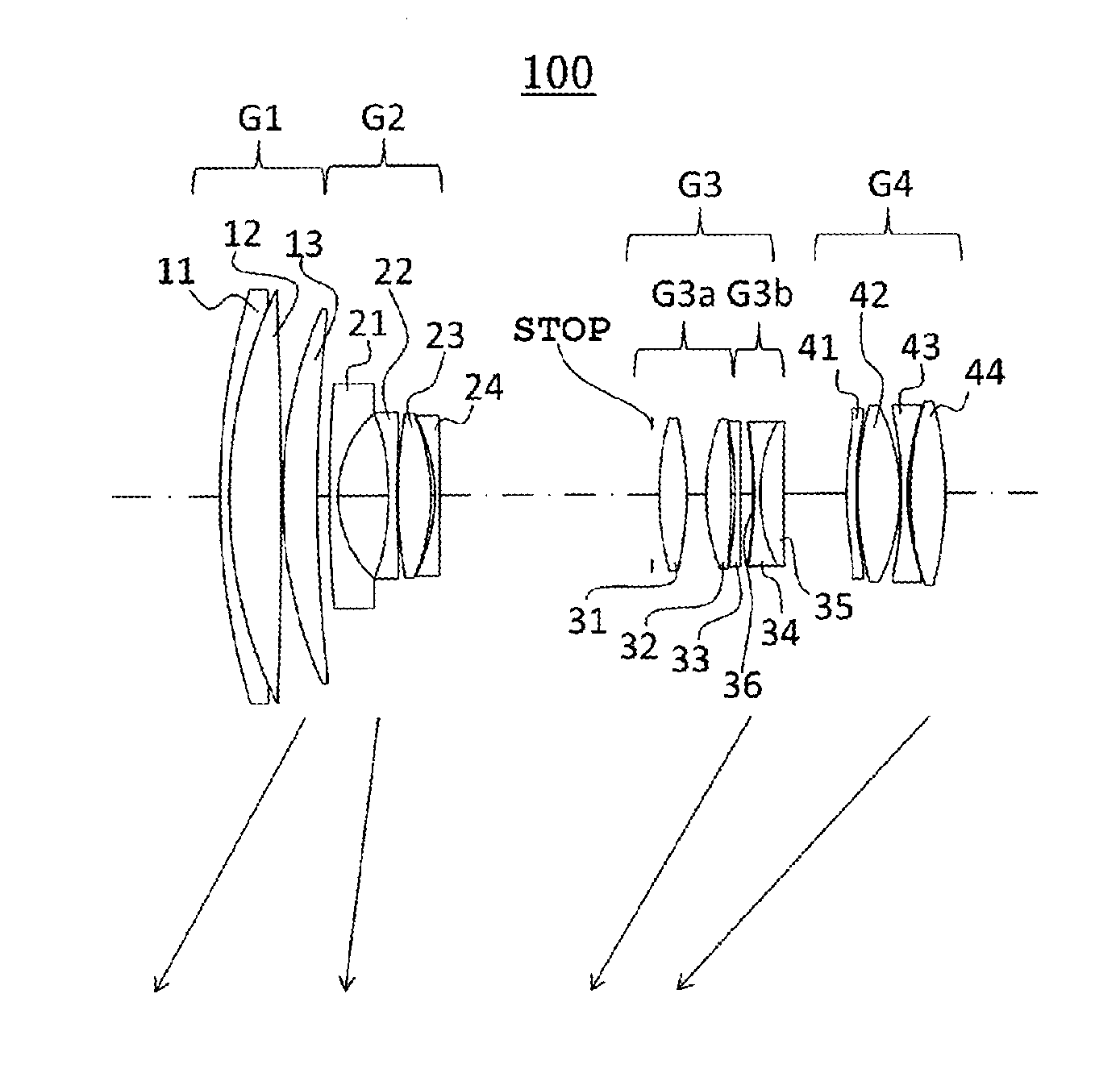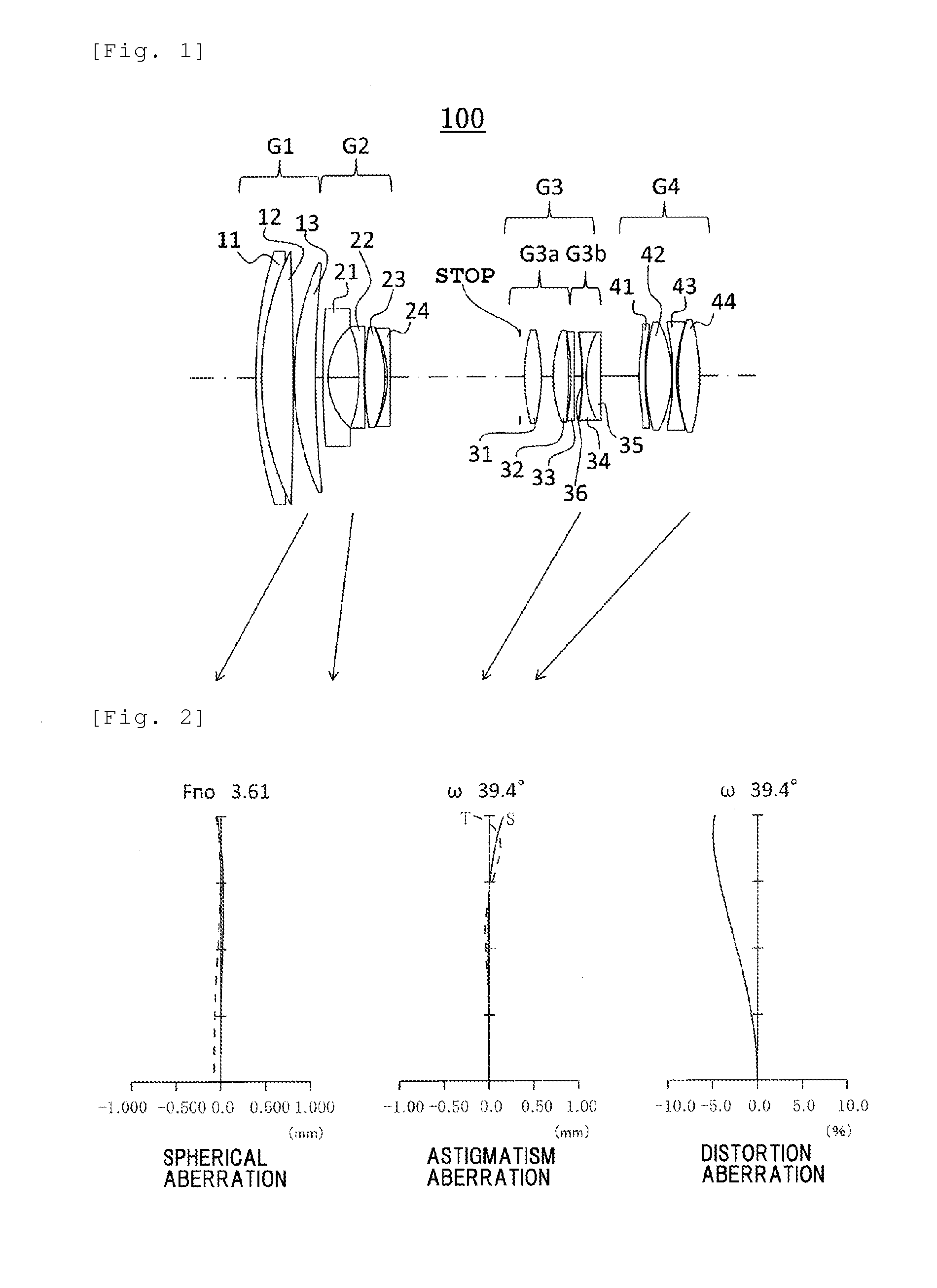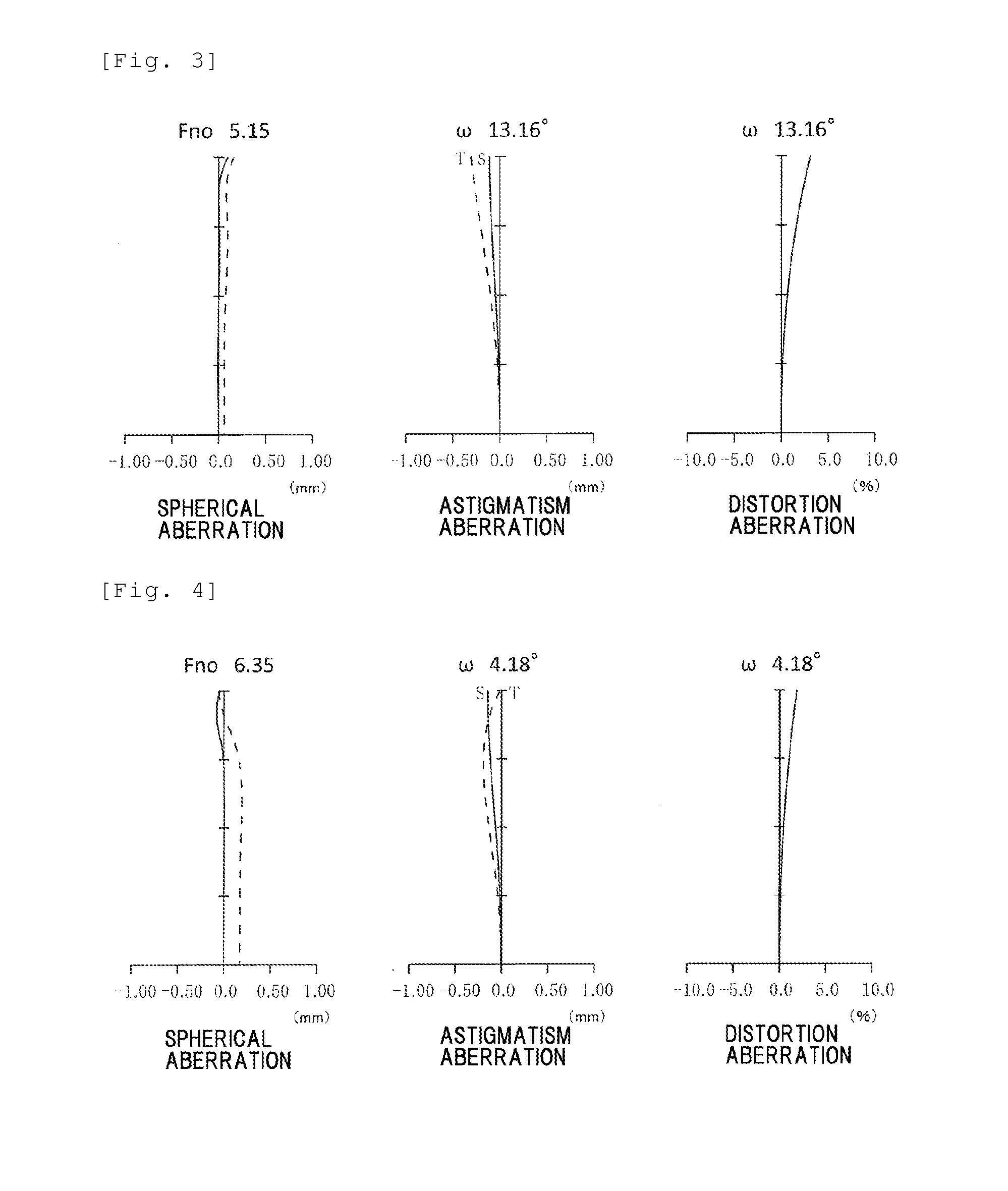Zoom Lens
- Summary
- Abstract
- Description
- Claims
- Application Information
AI Technical Summary
Benefits of technology
Problems solved by technology
Method used
Image
Examples
example 1
[0166]First, the zoom lens in Example 1 will be described. The zoom lens in Example 1 has the same lens arrangement as that of the optical system 100 (see FIG. 1). That is, the zoom lens in Example 1 consists of the first lens group G1 having a positive refractive power, the second lens group G2 having a negative refractive power, the third lens group G3 having a positive refractive power and the fourth lens group G4 having a positive refractive power arranged in this order from the object side as the lens groups constituting the optical system 100. As described above, the second lens group G2 is a focusing lens group that moves in focusing. Focusing of object from an infinite distance to a closest distance is performed by moving the second lens group G2 to the object side in focusing. In FIG. 1, the symbol STOP denotes an iris. In zooming from the wide-angle end to the telescope end, the respective lens groups travel forward and backward along the optical axis to change distance be...
example 2
[0178]Next, Example 2 will be described. Since the optical system 100 of the zoom lens in Example 2 is almost the same in lens arrangement as that in Example 1, only differences including the lens arrangement from those in Example 1 will be described. In the optical system 100 in Example 2, the group 3b among the groups 3a and 3b constituting the third lens group G3 shifts in the direction perpendicular to the optical axis for the vibration compensation. The shift of the group 3b for the vibration compensation is 0.093 mm, 0.191 mm, and 0.503 mm at the wide-angle end, the intermediate focal length and the telescope end respectively at a correction angle of 0.3°. In the present example, the groups 3a and 3b may also independently move along the optical axis direction for magnification change. The travel directions are preferable to be the same directions as those in Example 1. The same applies to Example 3 and following Examples.
[0179]Tables 4, 5, and 6 respectively show the data on ...
example 3
[0180]Next, Example 3 will be described. Since the optical system 100 of the zoom lens in Example 3 is almost the same in lens arrangement as that in Example 1 also, only differences including the lens arrangement from those in Example 1 will be described. In the optical system 100 in Example 3, the group 3b among the groups 3a and 3b constituting the third lens group G3 may also shift in the direction perpendicular to the optical axis for the vibration compensation. The shift of the group 3b for the vibration compensation is 0.092 mm, 0.190 mm, and 0.502 mm at the wide-angle end, the intermediate focal length and the telescope end respectively at a correction angle of 0.3°.
[0181]Tables 7, 8, and 9 respectively show the data on the respective lenses constituting the optical system 100 of the zoom lens in Example 3 including the data on the lens surfaces, the focal lengths and the aspherical surfaces. The numerical values of the respective expressions are also shown in FIG. 35. FIG. ...
PUM
 Login to View More
Login to View More Abstract
Description
Claims
Application Information
 Login to View More
Login to View More - R&D
- Intellectual Property
- Life Sciences
- Materials
- Tech Scout
- Unparalleled Data Quality
- Higher Quality Content
- 60% Fewer Hallucinations
Browse by: Latest US Patents, China's latest patents, Technical Efficacy Thesaurus, Application Domain, Technology Topic, Popular Technical Reports.
© 2025 PatSnap. All rights reserved.Legal|Privacy policy|Modern Slavery Act Transparency Statement|Sitemap|About US| Contact US: help@patsnap.com



